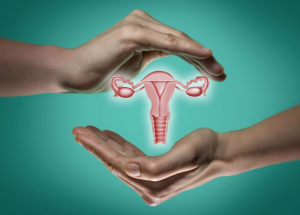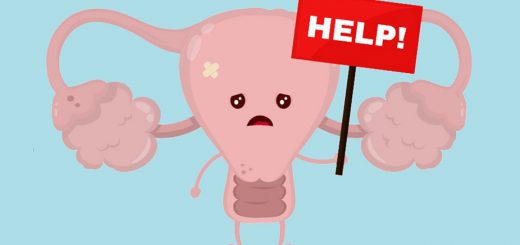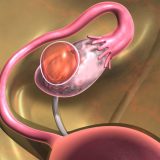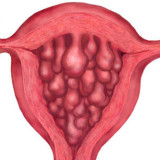Regular ultrasound examination helps to identify ovarian cyst during pregnancy. In most cases, tumors are benign, and carry a risk to the future mother’s health only with growth, and when reaches large size.
In addition, ovarian cyst during pregnancy is not such a common phenomenon. According to statistics, with the advent of the medical ultrasound procedures and its inclusion in the list of standard procedures for pregnant women, it was found that ovary tumors occur in 1-3 cases out of 1000. Most of them are benign cystic formations.
And if ovarian cyst has appeared most often disappear by their own during pregnancy or after childbirth.
But do not lose vigilance. The price of health is high enough to neglect regular medical ultrasound procedure.
Danger of ovarian cyst during pregnancy
Small functional cysts are usually not dangerous for pregnancy and women’s health. The danger is in their complications that occur if the cysts are not detected and cured.
In the case of growth and large size of ovarian cyst during pregnancy it can put pressure on the uterus and interfere with the development of the fetus in its cavity, which will lead to a miscarriage.
It is also worth considering that functional cyst during pregnancy occurs due to hormonal disorders that can have a negative impact on the development of the fetus.
Complications arising in both functional and neoplastic types of ovarian cysts during pregnancy are the twisting with following necrosis and cyst rupture. These are very dangerous complications.
Types of ovarian tumors during pregnancy
Benign tumor and cyst during pregnancy
Even during the normal course of pregnancy some types of ovarian cysts and other tumors may occur. They are usually harmless and very small.
The most common types of ovarian cysts and tumors tumors during pregnancy are:
- Corpus luteum cyst. A fluid-filled tumor is a remnant of the follicle. Most often, corpus luteum increases in the first trimester of pregnancy and disappears in the second trimester. Situations when it increases or retains its size throughout pregnancy are rare.
- Hemorrhagic cysts. They are also cysts of the corpus luteum, but in which bleeding occurred.
- Cysts after ovarian stimulation – controlled ovarian hyperstimulation, as an initial procedure in IVF, can lead to the formation of many cysts with thin walls and sizes reaching up to 10-15 cm. Such changes tend to burst and bleed, but, fortunately, most often are not malignant and disappear in the 2-3 trimester of pregnancy.
Cyst and benging tumor caused by pregnancy
During pregnancy, the following tumor-like formations in the ovaries may appear:
- Luteoma. Benign ovarian tumors arising from the active growth of luteal cells. They can cause an increase in the level of male hormones in pregnant women and in the female embryo. Most often they disappear themselves after childbirth.
- Trophoblastic disease. This is a tumor originating from the trophoblast. The disease develops during or after a uterine or ectopic pregnancy. If the disease develops during pregnancy, it usually leads to spontaneous abortion, eclampsia or fetal death. Rarely, but the fetus survives. This disease includes:
- Cysts hydatidiform mole (complete and incomplete).
The tissue of the bubble drift produces a large amount of chorionic gonadotropin, which leads to the formation of luteal cysts in the ovaries. In 15-20 % of cases, bubble drift is transformed into a chorionepithelioma – a malignant tumor, that is, it is introduced into healthy tissues and gives metastases.
The cyst appears most often after the first trimester, often in the form of a hydatide.
-
- Gestational trophoblastic neoplasia, including epithelioid trophoblastic tumor. However, this type refers more to malignant tumors and is rare.
Malignant tumors and cancer during pregnancy
Malignant tumors that can be detected during pregnancy include are:
- Carcinoma – cancerous tumors developing in epic tissues in different organs, including ovaries
- Teratoma – a tumor most often formed from gonocytes (primary reproductive – embryonic cells). It is a tissue or even an organ with atypical localization. They are diversified by various danger level. This type of tumor can even be benign.
It is believed that about 5% of ovarian tumors that do not disappear during pregnancy are malignant.
Symptoms of ovarian cysts
Ovarian cyst usually does not cause any symptoms. It is necessary to consult a doctor if there are at least expressed symptoms, such as:
- abdominal pain
- pain in the groin
- discomfort caused by pressure on adjacent organs,
- urodynia
- decreased appetite,
- abdominal distention.
Treatment of ovarian cyst during pregnancy
Diagnosis of ovarian cysts is carried out using ultrasound and magnetic resonance. This allows us to assess whether the tumor is dangerous.
In most cases, during treatment, the doctor only watches the presence of the cyst growth dynamic or until it gone itself.
Rarely, but it happens that hormonal or antibiotic treatments are used.
Surgical removal of the cyst is considered if its size is large and there is a negative dynamic of the development, the size does not decrease, there are undesirable symptoms (for example, bleeding). Laparoscopy is the most commonly used method of surgical ovary cyst removal during pregnancy.















